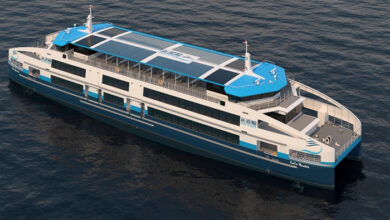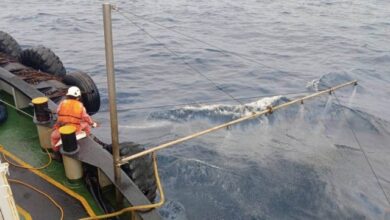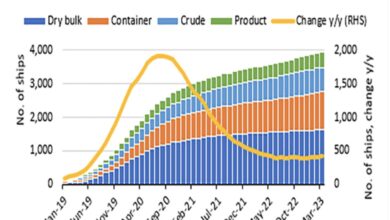Panama Canal : Closes Fiscal Year 2020 With 475 Million Tons
The Panama Canal closed fiscal year 2020 with 475.1 million tons

The Panama Canal closed fiscal year 2020 with 475.1 million tons, as a result of having offered an uninterrupted service to its clients and a safe environment for its collaborators, amid the impact that the Covid-19 pandemic caused globally.
“At all times, the Canal’s priority was to ensure the well-being of the nearly 10,000 men and women that make up its human team, who reaffirmed their commitment by adapting to the changes imposed by this pandemic, in order to guarantee the continuous operation of the highway. ”, Said the administrator, Ricaurte Vásquez Morales.
The fiscal period that ran from October 1, 2019 to September 30, presented two different scenarios for the Panama Canal, with a first semester that was projected above expectations, until the COVID-19 outbreak disrupted the life and the world economy.
The effects of the slowdown caused by the pandemic were felt more on the interoceanic highway between last May and July, with a reduction of around 20% in transits, mainly in the segments of passenger ships, vehicle carriers and liquefied natural gas ( LNG).
Transits and cargo movement began to normalize in August and September, the last two months of the fiscal year, which allowed closing with a total of 475.1 million tons (CP-SUAB, volume measure of the Universal Panama Canal Ships), according to preliminary figures.
As a world trade route, the interoceanic highway reflects the trends of the global economy that this year will contract between 5% and 6% as a result of the pandemic, and with a greater fall of up to 8% in the United States, the main customer of the Canal, based on estimates from the International Monetary Fund (IMF).
In the midst of this scenario, the Panama Canal ended its fiscal year with a 2% reduction in transits, adding 13,369 compared to what was estimated in its budget, while the 475.1 million tons CP-UMS meant a 4% drop in comparison with the projected.
Compared to fiscal year 2019, high draft transits remained at very similar levels, and the total CP / UMS tonnage grew 1%.
Continuous and safe service
This level of operations and results was possible due to the measures adopted to preserve the well-being of employees, mitigating the transmission of the coronavirus among the Canal’s workforce.
Last March, for example, the interoceanic highway adjusted its work teams with the essential human resources required to preserve a safe and continuous operation. Another part of the collaborators was on vacation and a portion teleworked as administrative support.
Market behavior
Fiscal year 2020 was marked by the trade war between the United States and China, the tightening of environmental policies in the maritime industry and, of course, the pandemic, which continues to impact the world economy.
Container ships remained the most relevant market segment in the Panama Canal, contributing 35% of Panama’s CP / UMS tonnes with 166.3 million tonnes (UMS-CP), followed by:
- Bulk carriers: 80.9 million tons.
- Tankers/chemical tankers: 69.2 million tons.
- LNG: 46.4 million tons.
- Gas carriers: 44.6 million tons.
When comparing fiscal year 2020 against the previous year, it is observed that there were very similar results, with a general increase in CP / UMS tonnage in the order of 1%. However, expectations for FY 2020 were optimistic; in fact, the results for the first half of the fiscal year were above projections.
As of March 2020, the impact of the pandemic is beginning to be felt in the passenger segment, which, due to the health controls implemented that ended the cruise season early, closed 10% lower than expected. Other segments severely affected by market conditions due to the pandemic were vehicle carriers and LNG, whose PC / UMS tonnages were 21% and 15%, respectively, below budget.
The negative impacts in these segments were partially mitigated by the good performance of the liquefied petroleum gas (LPG) and bulk carriers that registered 27% and 21% CP / UMS tonnage, respectively, above what was projected.
Maximum draft
The Panama Canal reached the close of its fiscal year offering its clients, for the first time in 20 months, a draft of 50 feet, the maximum offered by neopanamax locks, as a result of resource planning measures, efficient use of water and recent rains in its watershed.
In this way, the Canal provides a more profitable route to the industry, contributing to the global economic recovery. A draft of 50 feet allows ships to transit with a greater amount of cargo, which translates into benefits for customers because it makes the transport of goods more efficient.
At the end of its fiscal year, the Panama Canal also launched this month the process to have an optimized water resource management system, by announcing the specifications for the prequalification of those interested in participating in the tender for the design. , construction, and implementation of this project.
Reference: micanaldepanama.com













